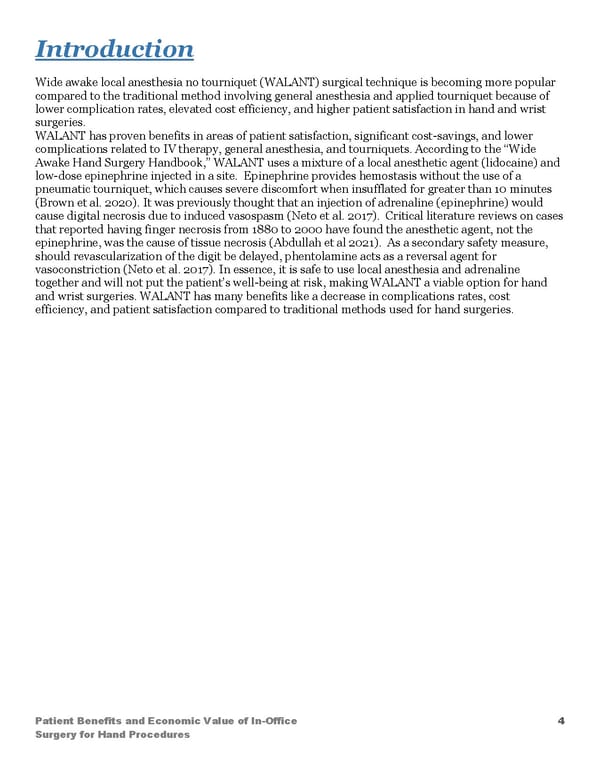Introduction Wide awake local anesthesia no tourniquet (WALANT) surgical technique is becoming more popular compared to the traditional method involving general anesthesia and applied tourniquet because of lower complication rates, elevated cost efficiency, and higher patient satisfaction in hand and wrist surgeries. WALANT has proven benefits in areas of patient satisfaction, significant cost-savings, and lower complications related to IV therapy, general anesthesia, and tourniquets. According to the “Wide Awake Hand Surgery Handbook,” WALANT uses a mixture of a local anesthetic agent (lidocaine) and low-dose epinephrine injected in a site. Epinephrine provides hemostasis without the use of a pneumatic tourniquet, which causes severe discomfort when insufflated for greater than 10 minutes (Brown et al. 2020). It was previously thought that an injection of adrenaline (epinephrine) would cause digital necrosis due to induced vasospasm (Neto et al. 2017). Critical literature reviews on cases that reported having finger necrosis from 1880 to 2000 have found the anesthetic agent, not the epinephrine, was the cause of tissue necrosis (Abdullah et al 2021). As a secondary safety measure, should revascularization of the digit be delayed, phentolamine acts as a reversal agent for vasoconstriction (Neto et al. 2017). In essence, it is safe to use local anesthesia and adrenaline together and will not put the patient’s well-being at risk, making WALANT a viable option for hand and wrist surgeries. WALANT has many benefits like a decrease in complications rates, cost efficiency, and patient satisfaction compared to traditional methods used for hand surgeries. Patient Benefits and Economic Value of In-Office 4 Surgery for Hand Procedures
 Patient Benefits and Economic Value of InOffice Surgery for Hand Procedures Page 3 Page 5
Patient Benefits and Economic Value of InOffice Surgery for Hand Procedures Page 3 Page 5